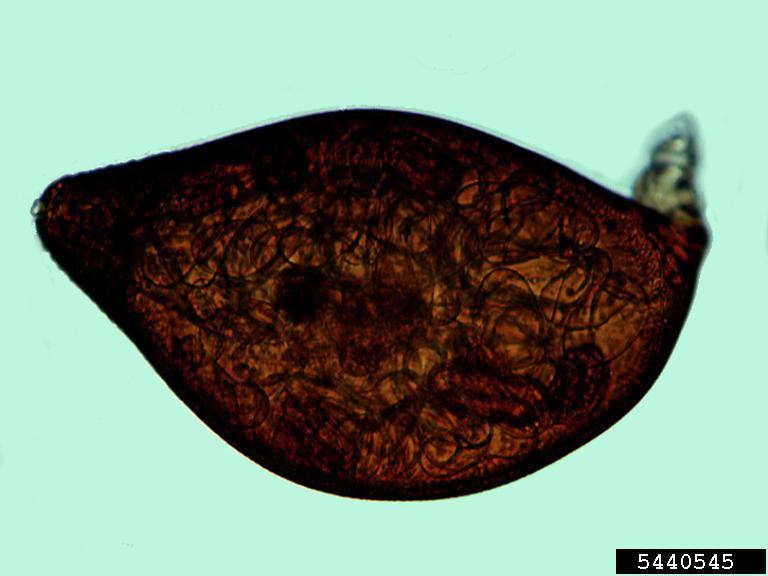Symptoms
Above ground symptoms of Heterodera latipons, H. avenae and H. filipjevi are similar, and include yellowing, poor tillering, stunting of plants and patchy growth. Leaves may be thin with reddish-yellow colouring.
Root symptoms of wheat and barley plants infested with H. avenae include elongation of the main root, bunched tips of rootlets and a knotted appearance due to cysts. Infected oat roots appear ‘ropey’ and swollen. White cysts (which turn brown as the season progresses) may be visible to the naked eye. H. avenae is characterised by the lemon shaped cysts: however, this is true of both endemic and exotic strains.
Root symptoms of H. latipons appear to be different to that seen with H. avenae with no characteristic “knotting” caused by excessive production of lateral roots at the site of infection.
Organism
Heterodera latipons, Heterodera avenae (exotic strains), Heterodera filipjevi and Heterodera glycines.
Host range
Heterodera latipons = wheat, barley and oats
Heterodera avenae = wheat, barley and oats
Heterodera filipjevi = wheat, barley and oats
Heterodera glycines = lentils, peas and faba beans
Method of spread
Cereal cyst nematodes would be most likely to enter in soil contaminants in containers, machinery, plant bulbs, grain, etc. Once present in Australia, cysts could potentially be dispersed in high winds, in water or especially on machinery with infected soil.
Conditions favouring disease
The biology of H. latipons and H. filipjevi appear similar to H. avenae. A late break is likely to delay hatching and only one cycle is completed per year.
Confused with?
Cereals – Cereal cyst nematode strains currently present in Australia and nutritional disorders, drought stress or herbicide injury.
Pulses – nutritional disorders, drought stress or herbicide injury.
Where?
Africa, Asia, Europe, North America and New Zealand.

Image 3. Heterodera glycines cyst nematode. Source: Jonathan D. Eisenback, Virginia Polytechnic Institute and State University, Budwood.org.


